Lotte Mart [Tax Refund Shop] (롯데마트)
12.1 Km 0 2024-04-23
34, Samho 1-gil, Yangsan-si, Gyeongsangnam-do
-
Ever Miracle Hotel [Korea Quality]에버미라클호텔[한국관광 품질인증]
12.4 Km 0 2023-05-23
358-9, Eoreumgoryet-gil, Miryang-si, Gyeongsangnam-do
+82-55-351-0100
Ever Miracle Hotel in Miryang, Gyeongsangnam-do, provides guests with a sojourn that rests and relaxes both body and mind. Visitors are welcome to stop and enjoy a healthy meal and some down-time from their busy lives.
Gajisan Provincial Park (Miryang Section) (가지산도립공원(밀양))
12.8 Km 11782 2021-05-31
Sannae-myeon, Miryang-si, Gyeongsangnam-do
+82-55-359-5357
Situated 1,240 meters above sea level, Gajisan Mountain is famous for its beautiful stones and rocky peaks. There are a variety of things to see on the mountain besides the beautiful stones. In fall, the pampas grass provides a spectacular sight as the whole mountain peak is covered in autumn colors. The mountain attracts many hikers wanting to see oddly-shaped rocks like the famous Ssalbawi Rock.
Hobaksogyegok Valley (호박소계곡)
13.2 Km 45170 2020-07-10
334-1, Eoreumgol-ro, Miryang-si, Gyeongsangnam-do
+82-55-359-5361
Hobaksogyegok Valley is located within Gajisan Mountain approximately 3 kilometers away from Eoreumgol Valley in Jaeyaksan Mountain, where the water originates. The valley offers beautiful surroundings and clear water developed over the years. Hobakso Pond, shape like a grain-grinding tool, is located at the base of a 10-meter-high waterfall. With a circumference of 30 meters, the pond is also called Sirye Hobakso Pond, Guyeongpokpo Falls, and Baengnyeonpokpo Falls. In the past, the pond was a spiritual place where people would pray for rain. Surrounded by white granite rocks, the area is a scenic place of natural beauty, free from pollution. Visitors can also look around nearby Baengnyeonsa Temple, Hyeongjeso Pond and Ocheonpyeong Rock.
Seongnamsa Temple (석남사 울산)
14.3 Km 19404 2020-03-17
557, Seongnam-ro, Ulju-gun, Ulsan
+82-52-264-8900
The name of the temple is believed to have originated from the fact that it is located south of Gajisan Mountain or Seokansan Mountain. Built in 824 A.D. (during the 16th year of King Heondeok’s reign), the temple was destroyed during the Japanese Invasions of Korea (1592-1598) and rebuilt in 1674 (during the 15th year of King Hyeongjong’s reign). Since then, it has gone through rebuilding several times. Consisting of 30 buildings, the temple is home to many Buddhist nuns.
Seongnamsa Three Story Pagoda (Local Tangible Cultural Property No. 5) was built in 824 A.D. by Monk Doui, reflecting his wish of protecting the country from foreign invasions. The pagoda was initially placed in front of Daeungjeon, but moved to the current location in 1973. Other notable relics in the temple include the Statue of Monk Doui (National Treasure No. 369), Three Story Sarira Pagoda, and Stone Water Tank (Cultural Property Material No. 4).
E-Mart Traders - Yangsan Branch [Tax Refund Shop] (이마트트레이더스 양산)
14.3 Km 0 2024-04-23
16, Pyeongsan-ro, Yangsan-si, Gyeongsangnam-do
-
Petroglyphs of Bangudae Terrace (울주 대곡리 반구대 암각화)
14.4 Km 26550 2023-07-17
285, Bangudaean-gil, Ulju-gun, Ulsan
+82-52-204-0322
In Daegok-ri, Eonyang-eup sits Bangudae Terrace, a picturesque spot where a ridge of Yeongosan Mountain extends to and stands tall to form quite a spectacle featuring uniquely shaped rocks and cliffs. The name, Bangudae, comes from how it resembles a turtle lying prone on the ground. Petroglyphs are paintings drawn by people from the prehistoric times carved on rocks and depicting various scenes and events in their daily lives. Petroglyphs were often drawn on enormous rocks and other sacred locations of groups, and it is believed that people gathered around them to hold various rituals.
Petroglyphs of Bangudae Terrace in Daegok-ri, Ulju-gun are estimated to have been drawn over several periods since the New Stone Age so you can discover the differences in styles among various ages. Primary objects that were popularly carved include sea animals, land animals, humans and tools and, as our prehistoric ancestors actively engaged in hunting, the hope of abundance in game is believed to be the reason why these objects were frequently carved on rocks. Vividly expressing animals and hunting scenes and colorfully depicting outstanding traits of objects, these petroglyphs are a form of both hunting art and religious art, and they are considered as the greatest masterpieces from which we can take a peek at the life and customs of the prehistoric ages.
Ulsan Petroglyph Museum (울산암각화박물관)
14.5 Km 34628 2021-02-22
254, Bangudaean-gil, Ulju-gun, Ulsan
+82-52-229-4797
Ulsan Petroglyph Museum was established on May 30, 2008 at the entrance to Petroglyphs of Bangudae Terrace (National Treasure No. 285) in Ulju-gun. The museum displays 311 exhibit materials and has an exhibition hall, a storage room, a research lab, and an audiovisual room.
The exhibition hall presents models of petroglyphs of Bangudae and petroglyphs of Cheonjeon-ri (National Treasure No. 147), an educational video introducing the petroglyphs, a children’s hall, and family activity facilities. Visitors can observe reproductions of famous petroglyphs at the outdoor exhibit.
Himart - Deokgye Branch [Tax Refund Shop] (하이마트 덕계점)
15.1 Km 0 2024-04-18
831, Ungsang-daero, Yangsan-si, Gyeongsangnam-do
-
Petroglyphs of Cheonjeon-ri, Ulju (울주 천전리 각석)
15.4 Km 30009 2020-02-05
Cheonjeon-ri, Dudong-myeon, Ulju-gun, Ulsan
+82-52-277-0101
Petroglyphs refer to the paintings in which objects and symbols are carved, pecked, and colored on rocks, huge cliffs and cave walls.
Some of these rocky paintings are from as early as the late Paleolithic Era, but mostly they are seen from the New Stone Age, Neolithic Era and Bronze Age in which times these paintings were abundant.
The upper part of the rock shows various animals including deer pecked into the rock, and the lower part of the rock has writing and drawings of humans, and animals made by penciling.
As for the upper part, it is thought to have been made throughout the New Stone Age and Bronze Age to express their consciousness for abundance. In comparision, the painting of a cavalcade, a sailing boat, a dragon, a horse, and a deer and about 300 writings on the lower part of the rock were considered to be done by people during unified Silla, showing their belief of the area as a holy ground.
![Lotte Mart [Tax Refund Shop] (롯데마트)](http://tong.visitkorea.or.kr/cms/resource/29/2891029_image2_1.jpg)
![Ever Miracle Hotel [Korea Quality]에버미라클호텔[한국관광 품질인증]](http://tong.visitkorea.or.kr/cms/resource/06/2801906_image2_1.jpg)
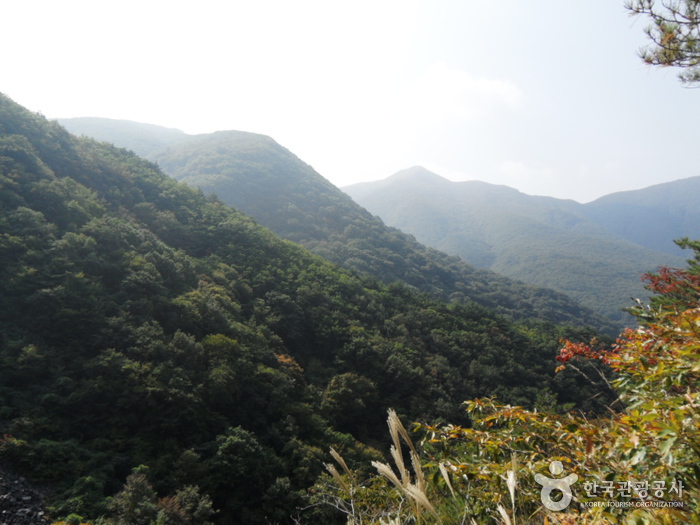
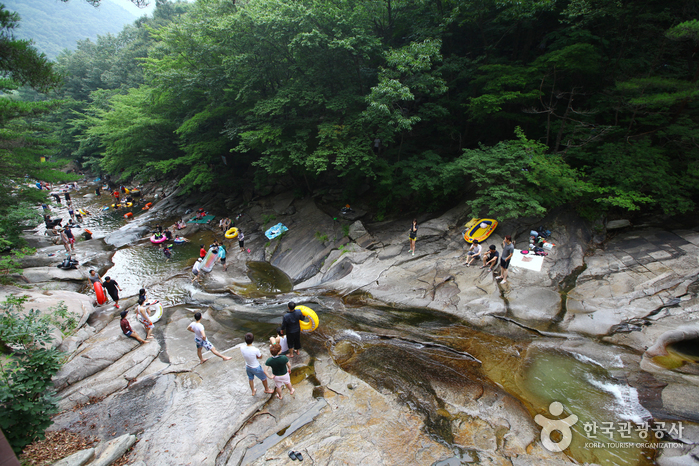
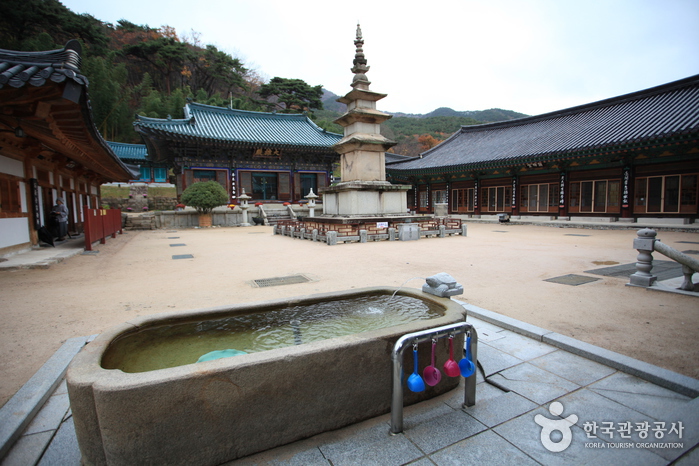
![E-Mart Traders - Yangsan Branch [Tax Refund Shop] (이마트트레이더스 양산)](http://tong.visitkorea.or.kr/cms/resource/93/2888793_image2_1.jpg)

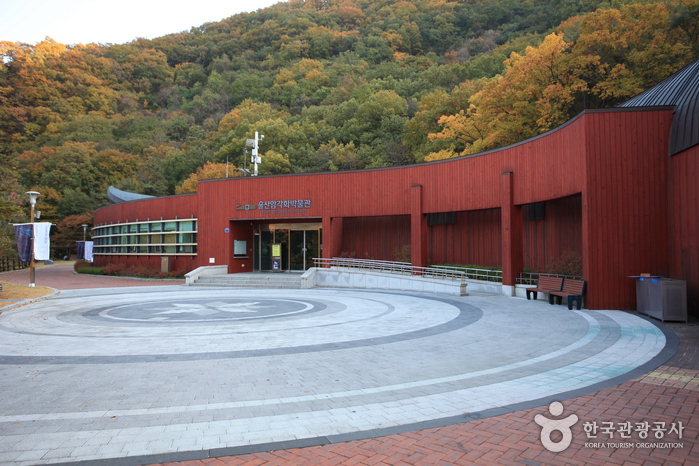
![Himart - Deokgye Branch [Tax Refund Shop] (하이마트 덕계점)](http://tong.visitkorea.or.kr/cms/resource/24/2890024_image2_1.jpg)
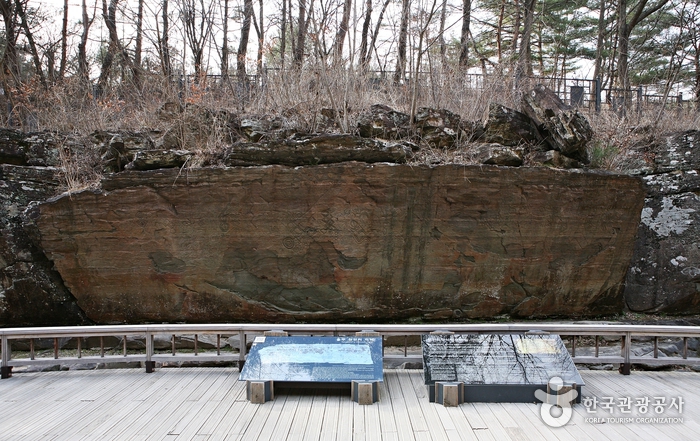
 English
English
 한국어
한국어 日本語
日本語 中文(简体)
中文(简体) Deutsch
Deutsch Français
Français Español
Español Русский
Русский